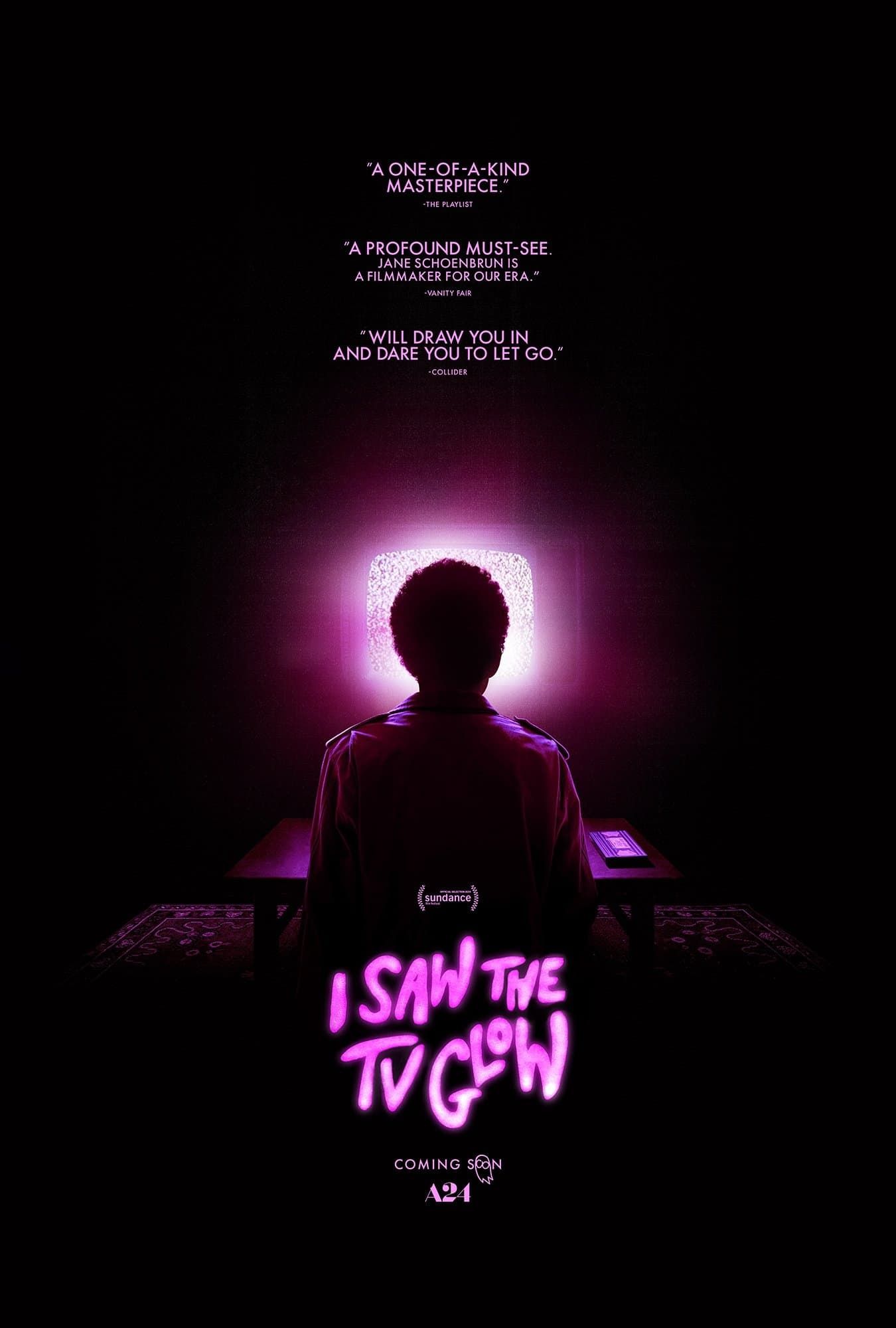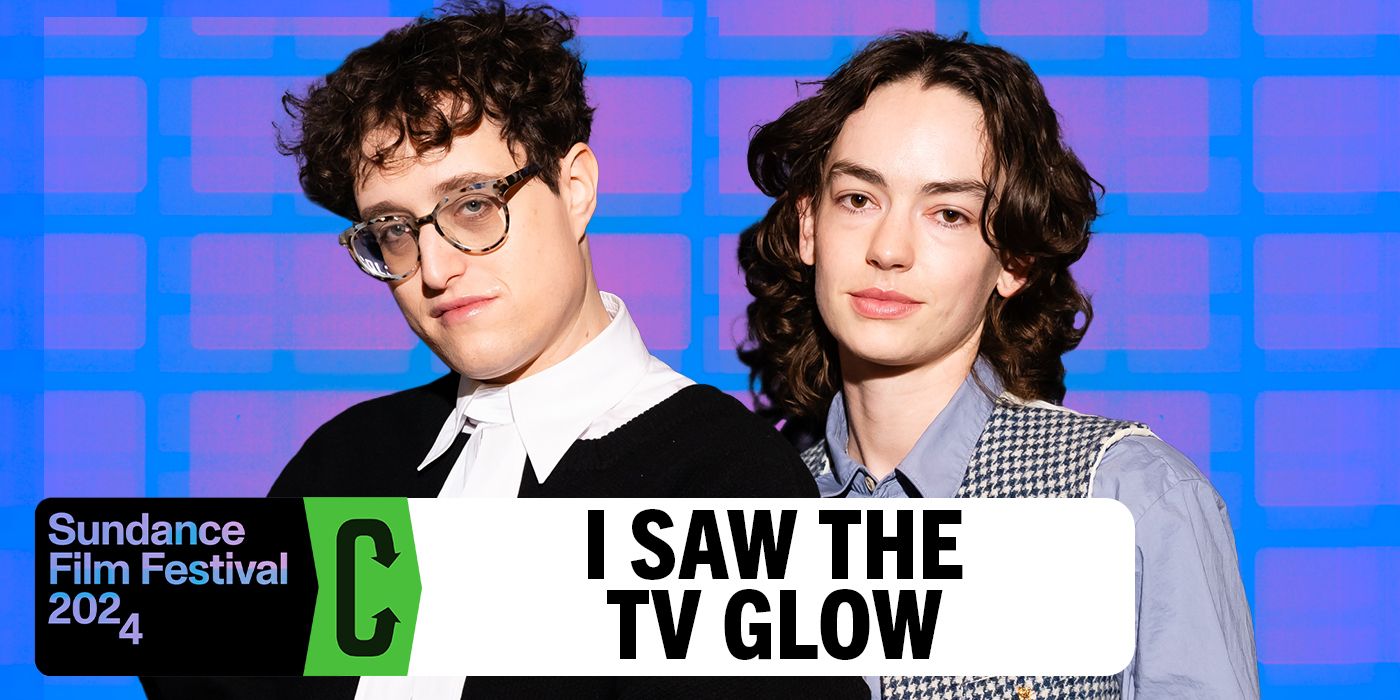Jane Schoenbrun’s latest film from A24 has an ending that leaves you thinking about it long after the movie ends.
Editor’s note: The following contains spoilers for I Saw the TV Glow.
The Big Picture
-
I Saw the TV Glow
by Jane Schoenbrun explores blurred realities, leaving viewers to interpret the merging of two worlds. - The film follows Owen & Maddie bonding over a supernatural show, Owen’s identity crisis, and with an ambiguous ending.
- The film explores ideas of alienation, self-discovery, and queerness, with an ending that prompts two interpretations of reality.
Jane Schoenbrun’s newest film, I Saw the TV Glow, is one that might require more than one watch to truly sink in. It doesn’t like to give easy answers, or tell you what’s real and what isn’t. It wants you to do the heavy lifting. You should be asking questions and looking for clues the entire time to draw your own conclusion. This isn’t unusual for Schoenbrun’s films; We’re All Going to the World’s Fair is similarly multifaceted, playing with the lines of reality and identity and leaving things open to interpretation. I Saw the TV Glow’s ending leans into this ambiguity and leaves the audience to ask themselves what the truth is in a world where two realities seem to be merging.

I Saw the TV Glow
Teenager Owen is just trying to make it through life in the suburbs when his classmate introduces him to a mysterious late-night TV show — a vision of a supernatural world beneath their own. In the pale glow of the television, Owen’s view of reality begins to crack.
- Release Date
- May 3, 2024
- Director
- Jane Schoenbrun
- Cast
- Amber Benson , Justice Smith , Brigette Lundy-Paine , Danielle Deadwyler
- Runtime
- 100 minutes
‘I Saw the TV Glow’ Is a Coming of Age Horror With a Late 90s Aesthetic
I Saw the TV Glow follows two outcasts – Owen (Justice Smith) and Maddie (Brigette Lundy-Paine), who form a bond over The Pink Opaque, a Buffy the Vampire Slayer-esque show about two girls that fight the forces of evil together. For Owen, the show seems to be the only thing that makes him feel complete. He frequently expresses feeling like he has nothing inside of him, especially after losing his mother (Danielle Deadwyler) and struggling while living with his father (Fred Durst). As they get older, Maddie suggests they run away and start a new life, and Owen doesn’t go with her. She disappears, leaving Owen to drag himself through life rewatching The Pink Opaque and trying to find his footing when he still doesn’t feel like he belongs.
However, Maddie returns one day and tells Owen that he’s not who he thinks he is. The world of The Pink Opaque is real, and if he’ll just bury himself alive, he can join Maddie in the universe of the show. As they approach the football field, where Maddie has dug a grave for Owen, he changes his mind and runs home. Life from then on is dreary. Owen spends his days working in a movie theater, then a fun center, never seeing Maddie again.
‘I Saw the TV Glow’ Is a Story of Alienation and Discovery
Beyond being a (possibly) supernatural tale of mirrored universes,I Saw the TV Glow is about the experience of the alienated and the way people use media as a coping mechanism and a form of discovery. Both Owen and Maddie are kids with turbulent lives that aren’t anyone’s first priority. They are different from those around them, Maddie because she is a lesbian, and her classmates have treated her like an outcast, and Owen because he simply doesn’t seem to have any interest in others and has trouble relating to people. This is ultimately what brings them together. They have a shared coping mechanism in The Pink Opaque, a distraction that they can align themselves with, a place they can escape to. Perhaps even literally.
Throughout the film, we see that Owen doesn’t know himself. The Pink Opaque is the only thing he ever says that he likes, and he says that he feels as though he’s empty inside and that he’s afraid to open himself up to see. It’s something that is incredibly difficult to do. Life is sometimes so much easier – but so much more miserable – if you never try to figure out who you are. You can be who everyone else tells you to be, or you can be no one at all, and both options are easier to swallow than realizing that you don’t have to live for anyone else, and that who you are is always inside of you if you find the will to look. It has to be you that looks, though.

‘I Saw the TV Glow’ Director’s Dream Came True: Making Their Sophomore Feature with A24
“A24 has managed to brand themselves as the place where … you’re gonna see something that’s defined by its difference from the mainstream.”
Maddie tells Owen that he’s actually Isabel – who had her heart removed and was buried alive in the series finale of The Pink Opaque – Owen’s statements about being empty make more sense. He’s literally missing a piece of himself, a part that’s supposed to help him live and love. It’s entirely possible that Maddie was simply too attached to the show that brought her so much comfort that she’s desperate to find a way to save herself from the life she’s struggling through, even if that means taking Owen with her.
‘I Saw the TV Glow’s Ending Leaves Room for Two Realities
In the end, Owen has a complete meltdown during a birthday party at the fun center, and while in the bathroom, he uses a box cutter to slice open his chest and finally see what’s inside of him. He finds television static and The Pink Opaque and nothing else, but this is revealed to be a hallucination of sorts. He leaves the bathroom and walks through the fun center apologizing to everyone, but no one looks his way. There’s no acknowledgment at all. It’s as if Owen isn’t even there.
As mentioned before. I Saw the TV Glow doesn’t spoon-feed you the answer. The ending can have two interpretations. The first is that Owen made the wrong choice. Maddie had been telling the truth, and he’d turned her down to continue on living a lonely and unfulfilled life. This is why when he cut himself open, The Pink Opaque was playing inside. That’s who he truly is. He is Isabel, still buried in the ground and needing to claw her way out for the show to continue. As for why no one acknowledged him, perhaps it is because the illusion has finally shattered. Owen is no longer part of this fake reality; he’s aware, and now there’s no need for the comfort of this reality to continue.
However, Schoenbrun has offered a different interpretation. Schoenbrun often weaves queer themes into their films, and I Saw the TV Glow is no different. In an interview with Entertainment Weekly, they explain that they wrote the film early in their transition, and that Owen’s experience mirrors their own. The TV’s glow inside of Owen at the end isn’t a sign that The Pink Opaque’s universe is real; it’s what Owen is, a version of himself that has been repressed and locked away throughout his life and only accessed when he finally musters the courage to open himself up to discovery. Schoenbrun notes in the interview that this kind of discovery can only happen on one’s own. It had to be Owen who set it in motion, it had to be Owen who took the leap into the unknown. This is why at the very end of it all, Owen is greeted with nothing at all, as he apologizes to the patrons of the fun center. It’s no longer about him appeasing people, or placating them. It’s about him being himself. And sometimes, being yourself and knowing who you are means you’re alone.
I Saw the TV Glow is in theaters now.
This article was originally published on collider.com


